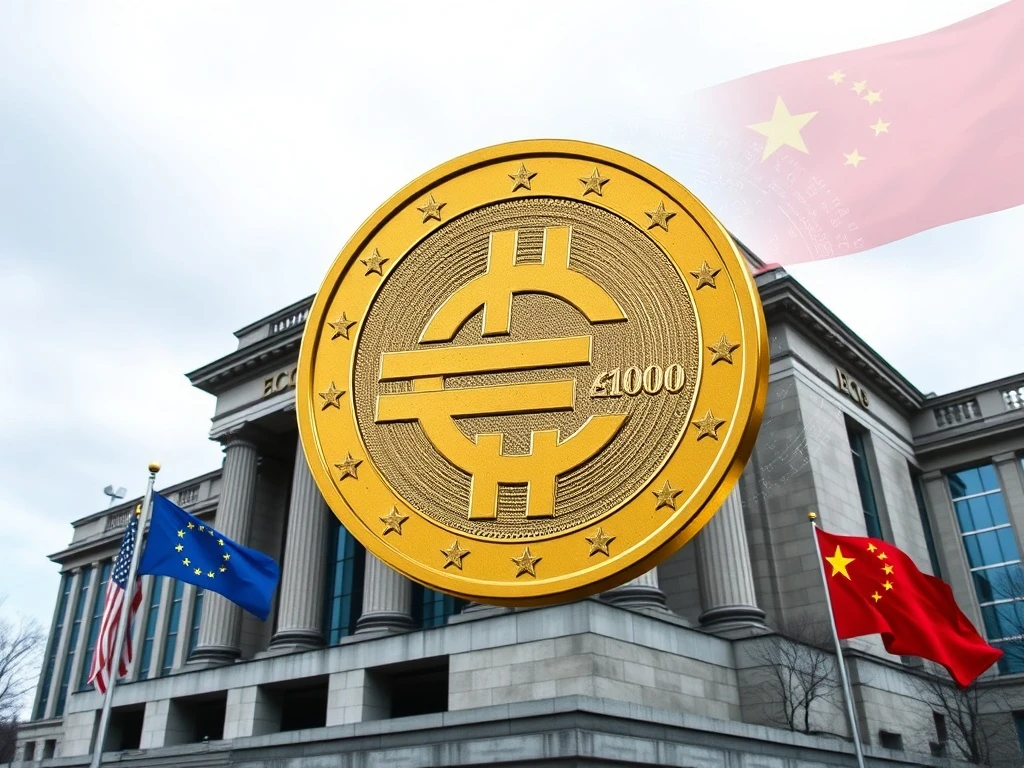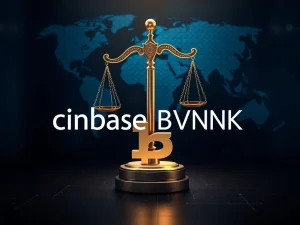Urgent Call: ECB Demands Robust Regulation for Non-EU Stablecoins Amid Global Competition

The financial world is buzzing with new challenges. European Central Bank (ECB) President Christine Lagarde recently issued a powerful call. She urged policymakers to address critical gaps in ECB stablecoin regulation. This specifically targets stablecoins issued outside the European Union. Her remarks highlight growing concerns over financial stability. These worries come as the US moves to implement its own stablecoin framework. Meanwhile, EU officials are closely examining the implications of foreign-issued digital assets. This global push for clarity underscores a pivotal moment for digital currencies.
Addressing Risks from Non-EU Stablecoins
Christine Lagarde emphasized the urgent need for action. She spoke at the ninth annual conference of the European Systemic Risk Board. Lagarde stated that existing protections are not enough. The EU’s robust Markets in Crypto-Assets (MiCA) framework covers stablecoins within its borders. However, it lacks sufficient reach for those originating elsewhere. Consequently, a regulatory void exists for non-EU stablecoins. This situation poses potential systemic risks. Therefore, policymakers must act decisively. They need to close these critical gaps.
Lagarde detailed specific scenarios requiring attention. She highlighted situations where EU and non-EU entities jointly issue stablecoins. She argued that such issuers should not operate in the EU without “robust equivalence regimes.” These regimes must be in place at the source jurisdiction. Furthermore, EU investors must always redeem their holdings at par value. Issuers also need to fully back their coins. These safeguards are essential. They protect consumers and maintain market integrity.
The MiCA Framework and Investor Protection
The MiCA framework represents a landmark achievement. It provides a comprehensive regulatory structure for crypto-assets in the EU. MiCA specifically prohibits redemption fees for stablecoins. This offers a strong layer of investor protection. Lagarde explained the potential problem clearly. “In the event of a run,” she stated, “investors would naturally prefer to redeem in the jurisdiction with the strongest safeguards.” This jurisdiction is likely the EU, thanks to MiCA. However, she warned, “the reserves held in the EU may not be sufficient to meet such concentrated demand.” This scenario could lead to significant financial instability. It poses a serious threat.
MiCA ensures that stablecoin issuers meet strict requirements. They must hold adequate reserves. These reserves must back the stablecoin’s value. This framework aims to prevent past failures seen in the crypto market. Yet, the challenge of cross-border stablecoins remains. Different regulatory standards create vulnerabilities. Therefore, international cooperation becomes paramount. The EU seeks to extend its high standards globally.
The Race for a Digital Euro and Global Influence
The ECB has explored the potential for a digital euro for years. This project aims to offer a central bank digital currency (CBDC). A digital euro could provide a secure and efficient payment method. It would complement physical cash. However, the global landscape for digital currencies is rapidly evolving. Stablecoin laws and regulations pushed by the Trump administration in the US could impact the ECB’s plans. The US Congress passed a law in July. This law establishes a framework for stablecoins. It will likely benefit issuers of US-pegged coins.
Piero Cipollone, an ECB executive board member, voiced concerns in April. He warned about potential consequences. “[The US government’s policies] could potentially result not just in further losses of fees and data,” Cipollone said. He also noted a risk of “euro deposits being moved to the United States.” This shift could further strengthen the dollar’s role in cross-border payments. The development of a digital euro is therefore crucial. It ensures the euro maintains its international standing.
Navigating Global Stablecoin Competition
The world is witnessing intense global stablecoin competition. The US is implementing its new framework. EU policymakers are also considering their best path forward. China, too, may be looking at a yuan-backed coin. Reports from August suggested the Chinese government was considering a stablecoin pegged to its renminbi currency. This follows the slow rollout of a digital yuan. As of recent reports, officials have not confirmed a state-issued stablecoin. However, such a move would directly respond to US efforts. The US aims to strengthen the dollar’s role globally.
This competition is not merely about technology. It involves geopolitical influence and financial sovereignty. Each major economic bloc seeks to establish its currency’s dominance in the digital age. The implications are far-reaching. They affect international trade, finance, and payment systems. Therefore, robust and harmonized ECB stablecoin regulation is critical. It ensures a level playing field.
Ensuring Robust ECB Stablecoin Regulation
Christine Lagarde’s statements underscore the importance of robust ECB stablecoin regulation. This is not just a matter of technical compliance. It is about safeguarding the entire financial system. The rapid growth of stablecoins, especially those from outside the EU, demands a proactive approach. Regulators must anticipate risks. They must also create frameworks that are adaptable. This ensures consumer protection and market stability.
Key regulatory principles for stablecoins include:
- Full Backing: Stablecoins must be fully backed by high-quality, liquid reserves.
- Redeemability at Par: Investors must always redeem their stablecoins for their pegged value.
- Robust Oversight: Issuers require strong regulatory supervision in their home jurisdictions.
- Interoperability: Future regulations should consider how stablecoins interact across borders.
The EU’s experience with the MiCA framework provides a strong foundation. However, the cross-border nature of stablecoins requires international collaboration. Without it, regulatory arbitrage could undermine efforts. This could expose investors to unnecessary risks.
The call from ECB President Christine Lagarde is a clear signal. The EU is determined to protect its financial system from potential stablecoin risks. The challenge of regulating non-EU stablecoins is significant. It requires careful consideration and international cooperation. As the world navigates global stablecoin competition, the development of the digital euro remains a strategic priority. Establishing comprehensive ECB stablecoin regulation will be vital. It ensures a secure and stable future for digital finance. The path ahead demands vigilance and collaboration from policymakers worldwide.







